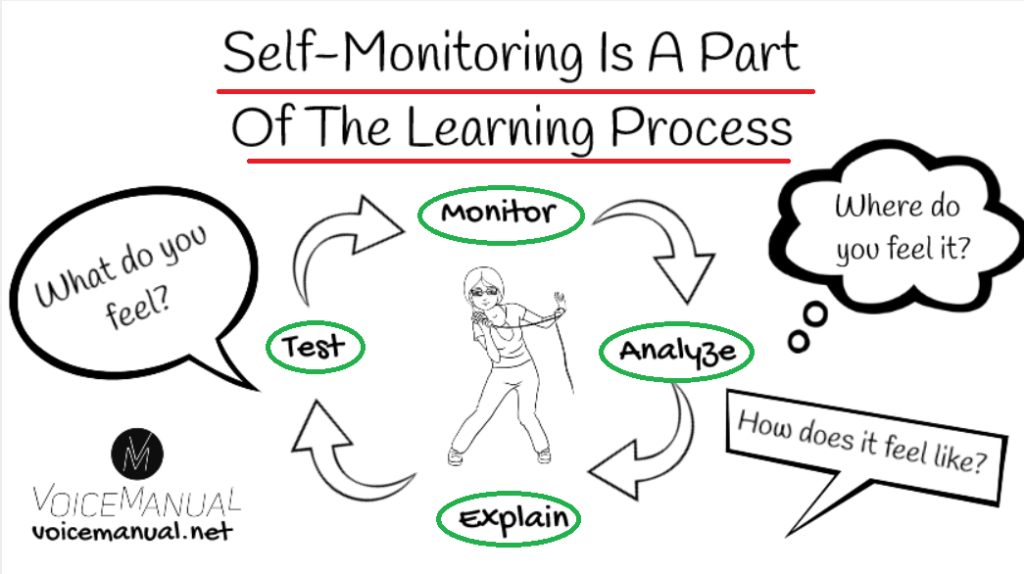We evaluate our own and other’s singing mostly by what we hear. Besides to listening, smart singers also learn to notice what they are doing in the body because it is the most efficient way to learn new things and on the other hand to strengthen the existing skills – and also to solve problems. Reflecting our own singing can be very challenging but it is also a skill that can be improved. We made a list of questions to help you train it.

Self-Monitoring The Vocal Folds In Singing
The voice is created in the vocal folds. The vocal folds can vibrate in different manners and thus create different sounds. We can learn to feel the changes in the vibratory pattern by monitoring differences when singing softly versus loudly or the differences how we create the pitches. Several other changes take place simultaneously which makes monitoring quite demanding. The knowledge of the anatomy, listening to the voice and teacher’s help are very useful in order to improve in this topic.
Locating The Vocal Folds
Vocal folds are in the larynx behind the thyroid cartilage of which the most notable part is the Adam’s apple – especially in male singers.

Questions To Help To Self-Monitor The Vocal Folds When Singing
- Compare your speaking voice and your singing voice. Do they feel the same in the larynx? Is one louder or quieter than the other? If you gently put your finger on the thyroid cartilage does the vibration feel the same in singing and in speech?
- Sing low notes and then high notes. Do you feel any differences in the vocal folds or in the larynx when changing the pitch? If you feel them, what kind of differences? Does something change when you shift from low range to high range and vice versa?
- Compare singing softly and singing loudly. What kinds of differences do you feel or notice in the vocal folds or in the larynx? Are those differences the same in the low range and in the high range?
- Monitor your airflow when singing. Do you feel that the air flows slowly or fast? How does the sound begin? How long phrases can you sing with one breath? Can you hear the air when singing?
- How free or relaxed does it feel in the vocal folds when you are singing? How much work do you feel you are doing in the vocal folds when you are singing?
References:
Aura M., Laukkanen A-M., Ojala J., 2018. Laulunopettajien yleisimmin käyttämät laulupedagogiset käsitteet. Aineditaktiikka 2 (2), 38-70. DOI: 10.23988/ad.73222
Jordan-Kilkki P., Kauppinen E. & Korolainen-Viitasalo E. (toim.) Musiikkipedagogin käsikirja. Vuorovaikutus ja kohtaaminen musiikinopetuksessa. Opetushallitus. Tampere.
Juntunen M-L., Nikkanen H.M., Westerlund H. (toim.). Musiikkikasvattaja – Kohti reflektiivistä käytäntöä. Juva: PS-Kustannus.
Rauma J., 2019. Kehollisuus laulunopetuksessa. Sibelius-Akatemia.

